#design for manufacturing solutions
Explore tagged Tumblr posts
Text
Your Partner in Custom Plastics & Additive Manufacturing

In today’s fast-paced manufacturing landscape, businesses need reliable partners who can deliver precision, efficiency, and tailored solutions. Aprios Custom MFG stands at the forefront, offering a comprehensive range of services, from carbon additive manufacturing to custom plastics manufacturing and injection molding services. Our end-to-end solutions are designed to meet diverse industry needs while ensuring top-notch quality and innovation.
Carbon Additive Manufacturing: Redefining Possibilities
Additive manufacturing services have revolutionized the production process, allowing for greater design flexibility, faster prototyping, and reduced waste. At Aprios, our expertise in carbon additive manufacturing empowers businesses to create complex geometries and lightweight components that traditional methods struggle to achieve. Using advanced technologies, we ensure precision and durability, catering to industries like aerospace, automotive, and healthcare.
Benefits of Our Carbon Additive Manufacturing:
Our carbon additive manufacturing services offer unmatched flexibility, efficiency, and innovation, enabling businesses to achieve their design and production goals seamlessly.
Design Flexibility: Create complex and intricate parts with ease, pushing the boundaries of traditional manufacturing.
Rapid Prototyping: Accelerate product development cycles by quickly moving from concept to functional prototype.
Material Efficiency: Minimize waste and optimize material usage, promoting cost-effectiveness and sustainability.
Lightweight Components: Perfect for industries like aerospace, where weight reduction is crucial without compromising strength.
Cost-Effective for Small Batches: Avoid expensive tooling costs, making low-volume production economically viable.
Custom Plastics Manufacturing: Tailored to Your Needs
When it comes to custom plastics manufacturing, Aprios delivers solutions that align perfectly with your project requirements. From selecting the right materials to crafting intricate designs, our team ensures every detail meets your expectations.
Our Custom Plastics Services Include:
At Aprios, we specialize in custom plastics manufacturing, offering tailored solutions to meet the unique demands of each project.
Thermoplastics and Thermosets: A wide range of materials designed to meet specific application needs.
Precision Molding: High-tolerance parts engineered for complex and critical applications.
Prototyping & Full-Scale Production: From concept validation to large-scale manufacturing, we handle every stage.
Color Matching & Finishing Options: Custom aesthetics and functional finishes to align with brand and product requirements.
Recyclable & Eco-Friendly Options: Sustainable material choices that minimize environmental impact.
Industry-Specific Solutions: Expertise in sectors like automotive, electronics, consumer goods, and more.
Our dedication to quality makes us a trusted plastic manufacturing company for businesses seeking reliable and innovative solutions.
Injection Molding Services: Precision at Every Stage
As a leading plastic injection molding manufacturer, Aprios offers comprehensive injection molding services that balance cost-efficiency with precision. Our advanced techniques cater to industries demanding high-performance components.
Why Choose Our Injection Molding Services?
Our injection molding services combine precision, scalability, and cost-efficiency, making Aprios a leading choice for businesses across industries.
High-Volume Production: Scalable manufacturing solutions designed for mass production without compromising quality.
Consistent Quality: Rigorous quality control processes ensure reliability and consistency in every batch.
Complex Part Fabrication: Expertise in multi-cavity and intricate mold designs for advanced product needs.
Material Variety: Access to a wide range of plastics, from standard to high-performance resins.
Low Waste Production: Optimized processes that reduce material waste and lower production costs.
Overmolding & Insert Molding: Advanced techniques for creating multi-material and enhanced-functionality components.
Our reputation as a reliable injection molding manufacturer is built on precision, consistency, and customer satisfaction.
Design for Manufacturing (DFM) Solutions: From Concept to Completion
Bringing a product from concept to market requires a strategic approach, and our design for manufacturing solutions streamline this process. Aprios specializes in DFM development services, helping clients refine their designs for optimal manufacturability and cost-efficiency.
Our DFM Services Include:
Our Design for Manufacturing (DFM) solutions are crafted to optimize every stage of your product development cycle, ensuring that your concepts transition smoothly into market-ready products with minimal cost and maximum efficiency.
Early-Stage Design Consultation: We collaborate with clients from the very beginning, identifying potential design challenges and recommending improvements to enhance manufacturability, reduce complexity, and streamline production.
Material Optimization: Selecting the right material is crucial for both performance and cost. Our experts guide you in choosing materials that match the functional needs of your product while considering factors like durability, flexibility, and cost-effectiveness.
Cost-Reduction Strategies: Our team focuses on simplifying designs, improving production workflows, and utilizing cost-effective materials without compromising quality. We aim to reduce overall manufacturing expenses while maintaining product integrity.
Tooling & Mold Design: Custom tooling and mold designs are critical for achieving precision and efficiency. We create tailored molds that meet specific product requirements, ensuring consistent quality and reducing cycle times during production.
Prototyping & Testing: Before scaling up, we provide detailed prototypes and conduct rigorous testing to ensure design viability. This step helps identify potential issues early, reducing risks and enhancing final product quality.
Regulatory Compliance: Our team ensures that your products meet all relevant industry standards and regulations, minimizing the risk of compliance issues and facilitating a smoother market entry.
Our goal is to minimize production errors, reduce costs, and accelerate time-to-market for your products.
Why Choose Aprios Custom MFG?
Partnering with Aprios Custom MFG means choosing a team dedicated to precision, innovation, and customer success.
Expertise Across Industries: Serving aerospace, automotive, healthcare, consumer goods, and more.
Advanced Technology: Leveraging the latest in additive manufacturing and injection molding techniques.
Customized Solutions: Flexible approaches tailored to meet unique project requirements.
Sustainability Focus: Eco-conscious practices and recyclable material options for responsible manufacturing.
End-to-End Support: Comprehensive services from initial design to final product delivery.
Let’s Build Something Great Together
At Aprios Custom MFG, we’re more than just a plastics molding company—we’re your dedicated partner in turning ideas into reality. Whether you need cutting-edge carbon additive manufacturing, precision injection molding services, or expert DFM development, we have the expertise and resources to bring your vision to life.
Contact Aprios Custom MFG today to discuss your project and discover how our tailored manufacturing solutions can help you succeed.
#carbon additive manufacturing#additive manufacturing services#custom plastics manufacturing#design for manufacturing solutions#injection molding services#plastics molding company#dfm development services#injection molding manufacturers#plastic manufacturing company#plastic injection molding manufacturer
0 notes
Text
NAILLESS BOXES: A SUSTAINABLE PACKAGING SOLUTION
Nail less Boxes: A Sustainable Packaging Solution
Are you in search of an innovative and eco-friendly packaging solution? Look no further than Ficus Pax, as we introduce our revolutionary nail-less E-1 grade plywood packaging boxes. These boxes are meticulously crafted from high-quality wood and reinforced with steel corners, offering a new level of convenience, reliability, and sustainability in packaging.
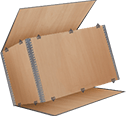
At Ficus Pax, we understand the importance of sustainable practices in today’s world. That’s why our nail-less boxes are designed to minimize environmental impact without compromising on durability. By eliminating the need for nails, we reduce waste and make recycling easier, contributing to a greener future.
Our boxes are not only environmentally friendly but also highly functional. The precision craftsmanship ensures that each box is sturdy and reliable, providing optimal protection for your valuable goods during shipping. The steel corners add an extra layer of reinforcement, ensuring that your items remain intact even in the most demanding transportation conditions.
Benefits & Uses of Nail less Boxes
Ficus Pax pioneers the innovation of nail-less packaging solutions, offering unparalleled benefits in safeguarding your valuable goods across diverse industries. Nail-less boxes redefine convenience and durability, ensuring optimal protection during storage and transit.
Key Advantages:
Collapsible & Customizable: Our E-1 grade plywood nail-less boxes boast collapsible features, simplifying storage and transportation. Tailored to your product’s size and weight specifications, these boxes can be assembled and dismantled effortlessly, eliminating the need for on-site carpenters or nails.
Enhanced Durability: Crafted with a fusion of wood and reinforced steel corners, these boxes ensure superior strength and resilience. Their ability to withstand challenging weather conditions and prolonged storage safeguards your goods effectively.
Eco-friendly & Reusable: Utilizing plywood, these boxes remain exempt from ISPM 15 certification. This eco-friendly approach aligns with sustainable practices, while their reusability for up to 5 years underscores their cost-efficiency.
Versatile Applications: From safeguarding sensitive electronics to transporting heavy machinery, nail-less plywood boxes offer a versatile packaging solution for various industries. Their adaptability to diverse product types underscores their universal utility.
FAQs
What sets nail-less plywood boxes apart from traditional packaging?
Nail-less boxes offer unparalleled convenience and sustainability, eliminating the need for nails and skilled labor during assembly, making them collapsible and reusable.
Can these boxes be customized for specific products?
Absolutely! Ficus Pax provides tailored solutions, ensuring these boxes match your product’s size, weight, and transportation needs.
Are these boxes compliant with international shipping standards?
Yes, our nail-less E-1 grade plywood boxes comply with export requirements and, being entirely plywood, are exempt from ISPM 15 certification.
#manufacturer#material#packaging#packing solutions#supplier#trendingnow#box#boxes#box set#storage#product design#packaging design#logo
2 notes
·
View notes
Text
Top Product Design Services 3D CAD Modeling and Prototyping Solutions From concept to prototype, Shalin Designs offers excellent product design services, 3D CAD modeling, and design for manufacturing to bring your ideas to life.
#Product design services#3D CAD modeling services#Prototype development services#Industrial product design#Custom product design solutions#Mechanical product design#Engineering design services#Product prototyping service#Manufacturing design solutions#CAD product design
0 notes
Text
Leading EOT Crane Manufacturers – High-Performance Lifting Solutions
As trusted EOT crane manufacturers, we design and produce high-quality cranes and hoists for various industries, including manufacturing, construction, and logistics. Our advanced engineering ensures durability, efficiency, and safety in every lifting operation. Contact us to explore the best lifting solutions for your business.
#EOT Crane Manufacturers#Lifting Solutions#Industrial Cranes#High-Performance Cranes#Electric Overhead Cranes#Crane Manufacturing#Crane Solutions#Heavy Lifting Equipment#Lifting Technology#Industrial Equipment#Overhead Crane Systems#Custom Cranes#Crane Design#Material Handling Equipment#Heavy Duty Cranes
1 note
·
View note
Text

Custom Metal Assembly Services for OEMs | Metalman Auto Ltd.
Metalman Auto Ltd. offers custom metal assembly services for OEMs, providing comprehensive solutions from component sourcing to final product assembly. Our expertise in metal fabrication and assembly ensures precise and reliable results. We work closely with OEMs to understand their specific requirements, offering flexible and cost-effective assembly services for a wide range of industries. Contact us to discuss your custom metal assembly needs.
#sheet metal fabrication#sheet metal design#sheet metal manufacturing#sheet metal components#industrial sheet metal#precision sheet metal#custom sheet metal solutions#advanced sheet metal manufacturing#sheet metal assembly#sheet metal contract manufacturing#metal fabrication#oem manufacturing#metalman auto#automotive parts#automotive#electric vehicles#fabricationservices
0 notes
Text
The Importance of Plastic Chocolate Molds and Plastic Injection Mold Design in the Confectionery Industry
The confectionery industry thrives on creativity, precision, and innovation. One of the essential components in chocolate production is the use of plastic chocolate molds, which play a crucial role in shaping chocolates into unique and attractive designs. The effectiveness of these molds largely depends on an efficient plastic injection mold design, ensuring durability, precision, and consistency in mass production. This article explores the significance of plastic chocolate molds and the role of plastic injection mold design in modern chocolate manufacturing.
The Role of Plastic Chocolate Molds in Chocolate Production
Plastic chocolate molds are widely used in the confectionery industry to create a variety of chocolate shapes and designs. These molds are typically made from high-quality food-grade plastic materials such as polycarbonate, which provide strength, flexibility, and non-stick properties for easy chocolate release.
Benefits of Plastic Chocolate Molds:
Versatility in Design: Plastic molds allow chocolate manufacturers to create a range of designs, from simple bars to intricate figures and themed shapes.
Cost-Effective Production: Compared to metal molds, plastic chocolate molds are more affordable and easier to replace, making them a cost-efficient choice for businesses.
Ease of Use: These molds are lightweight, easy to handle, and allow for smooth chocolate release without damaging delicate designs.
Consistency in Production: Plastic chocolate molds ensure uniformity in size and shape, crucial for maintaining brand identity and quality standards.
Durability and Longevity: High-quality plastic molds can withstand repeated use and are resistant to cracking, ensuring long-term usability.
The Importance of Plastic Injection Mold Design in Chocolate Molding
The effectiveness of plastic chocolate molds is directly influenced by their plastic injection mold design. Injection molding is a manufacturing process that involves injecting molten plastic into a pre-designed mold cavity, allowing it to cool and harden into the desired shape.
Key Aspects of Plastic Injection Mold Design:
Precision Engineering: A well-designed plastic injection mold ensures that chocolate molds have accurate dimensions and smooth finishes, preventing defects in the final product.
Material Selection: The choice of mold material impacts the durability and performance of the chocolate mold. High-quality polycarbonate and food-safe plastics are preferred.
Cooling and Release Mechanisms: Proper cooling channels in the injection mold design allow for efficient heat dissipation, ensuring chocolates set properly and can be easily removed from the molds.
Customization Capabilities: Advanced plastic injection mold design enables manufacturers to create custom chocolate molds that align with brand aesthetics and seasonal trends.
Production Efficiency: Well-optimized mold designs contribute to faster cycle times, higher production output, and reduced material waste, making manufacturing more cost-effective.
The Intersection of Plastic Chocolate Molds and Plastic Injection Mold Design
The relationship between plastic chocolate molds and plastic injection mold design is integral to high-quality chocolate production. Without a well-engineered injection mold, plastic chocolate molds may not function efficiently, leading to inconsistencies in shape, breakage, or poor chocolate release. Therefore, investing in precise and durable injection mold design is essential for confectionery businesses aiming to achieve consistent and appealing chocolate products.
Trends and Innovations in Chocolate Molding
With advancements in technology, both plastic chocolate molds and plastic injection mold design have evolved to meet changing consumer demands and industry trends. Some emerging innovations include:
3D Printing for Mold Prototyping: Confectionery companies are increasingly using 3D printing to create prototype molds before mass production, allowing for design testing and adjustments.
Eco-Friendly Materials: Sustainable plastic alternatives and biodegradable materials are being explored for chocolate molds to reduce environmental impact.
Smart Molding Technology: Integration of AI and automation in plastic injection mold design improves precision, reduces waste, and enhances production efficiency.
Personalized and Themed Molds: Custom chocolate molds featuring personalized names, brand logos, or seasonal themes are becoming more popular among consumers.
Choosing the Right Plastic Chocolate Mold Manufacturer
When selecting a manufacturer for plastic chocolate molds, consider the following factors:
Experience and Expertise: A manufacturer with experience in plastic injection mold design can provide high-quality and reliable chocolate molds.
Material Quality: Ensure that the molds are made from FDA-approved, food-safe plastic materials.
Customization Options: If you require unique or branded molds, choose a manufacturer that offers custom injection mold design services.
Durability and Performance: The manufacturer should use advanced injection molding techniques to produce long-lasting and precise chocolate molds.
Sustainability Practices: Look for companies that prioritize eco-friendly materials and production methods to align with sustainability goals.
Conclusion
Plastic chocolate molds and plastic injection mold design are vital components in the confectionery industry, enabling the mass production of beautifully shaped and high-quality chocolates. A well-designed injection mold ensures that chocolate molds perform efficiently, offering durability, precision, and ease of use. As innovations in molding technology continue to evolve, chocolate manufacturers can look forward to even more advanced solutions that enhance production efficiency, customization capabilities, and sustainability efforts. Investing in high-quality molds and injection mold design is essential for any confectionery business looking to maintain product consistency, improve production efficiency, and meet consumer expectations.
#plastic chocolate molds#injection molding solutions#best injection molding company#plastic injection molding manufacturer#plastic injection mold design#plastic injection mould manufacturer#injection frisbee#plastic moulding manufacturers#injection molding maker
0 notes
Text
Smith Structures (India) Pvt. Ltd. | Vision, Mission & Policy
Smith Structures is dedicated to top-quality steel construction, aiming to lead the industry with eco-friendly solutions and ISO 9001:2015-certified policies.
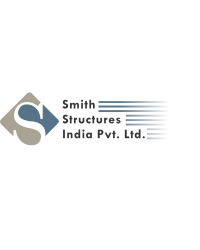
#peb Industry solution provider#peb Industry service provider#peb Industry manufacturer#high quality buildings Construction#accurate engineering designs#in#vadodara#Ahmedabad#Kutch#Delhi#Mumbai#Pune#Hyderabad#Indore#Surat#Vadodara#Chennai#gujarat#india
0 notes
Text
Best Practices in Design for Manufacturing (DFM) for Plastic Parts
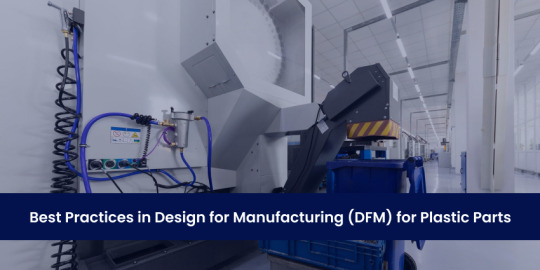
Design for Manufacturing (DFM) is a strategic engineering approach that simplifies and optimizes the manufacturing process right from the design stage. When applied to plastic part design, DFM ensures that products are easier, cost-effective, and efficient to manufacture without compromising on quality or performance.
In today's competitive market, the ability to address potential manufacturing challenges early in the design phase is a game-changer. From warping and sink marks to dimensional inaccuracies, DFM principles tackle these issues head-on, streamlining production, reducing costs, and maintaining product reliability.
This blog delves into the essential best practices for DFM in plastic part design. Whether you're an engineer, a designer, or a manufacturer, you'll find valuable insights and advanced strategies to elevate your design game. Here's what you can expect:
How Finite Element Analysis (FEA) predicts stress points to refine designs.
The role of sustainable materials and circular design in modern manufacturing.
How additive manufacturing (AM) enhances production workflows for better outcomes.
Get ready to explore innovative approaches and actionable insights that go beyond standard practices, giving you the edge in plastic part design.
Advanced Material Selection
Thermoplastics vs. Thermosetting Plastics
Selecting the right material is a fundamental step in DFM. Plastics are categorized into thermoplastics and thermosetting plastics:
Thermoplastics:
These plastics soften when heated and solidify when cooled, making them suitable for processes like injection molding and recycling. Examples include Polypropylene (PP), Polycarbonate (PC), and ABS. They are ideal for applications requiring flexibility and recyclability.
Thermosetting Plastics:
Once cured, these plastics become rigid and heat-resistant, making them excellent for high-stress applications. Examples include epoxies and phenolics.
Advanced Material Blends
To meet complex design requirements, advanced material blends offer enhanced properties:
Glass-Filled Nylon: Provides increased rigidity and durability.
UV-Resistant Polymers: Suitable for outdoor components.
Carbon Fiber-Reinforced Plastics: Achieve superior strength-to-weight ratios. Using custom blends helps optimize designs for specific applications, such as medical devices requiring both strength and biocompatibility.
Sustainable Materials
Eco-friendly material selection is vital for reducing the environmental impact of plastic production:
Biodegradable Plastics: Materials like PLA (Polylactic Acid) offer sustainability without compromising performance.
Recycled Polymers: Incorporating recycled materials reduces production waste and aligns with circular economy goals.
Circular Design Concepts: Ensures parts are designed for reuse and recyclability at the end of their lifecycle.
Material Properties and Applications
DFM optimizes material properties to meet specific part requirements:
Thermal Resistance: For parts exposed to high temperatures.
Chemical Resistance: Critical for medical or industrial applications.
Hygroscopic Behavior: Mitigating moisture absorption in materials like Nylon ensures dimensional stability.
Wall Thickness Optimization
Importance of Uniform Wall Thickness
Consistent wall thickness is a key factor in achieving defect-free plastic parts. It helps:
Improves Material Flow
Consistent wall thickness ensures smooth and uniform material flow during the injection molding process. This helps avoid disruptions, reduces the risk of incomplete filling, and enhances the overall quality of the part.
Minimizes Defects
Uniform walls help minimize common defects such as warping, sink marks, and voids. These issues often arise from uneven cooling or pressure variations, both of which are mitigated with consistent thickness.
Reduces Cycle Time
A uniform wall thickness allows for faster and more predictable cooling, which significantly reduces production cycle times. This efficiency accelerates manufacturing and enhances productivity.
Variable Wall Thickness
In complex designs where uniform thickness isn’t feasible, gradual transitions in wall thickness are essential. Key strategies include:
Avoiding sudden thickness changes to prevent material flow disruptions.
Using ribs and bosses to support structural integrity without adding unnecessary weight.
Advanced Simulations for Wall Thickness
Simulation tools improve wall thickness optimization:
Finite Element Analysis (FEA) helps identify stress concentration points.
Computational Fluid Dynamics (CFD) simulates plastic flow and cooling behaviors.
Draft Angles for Mold Release
Purpose of Draft Angles
Draft angles are critical for ensuring smooth mold release during injection molding. Properly designed draft angles prevent parts from sticking to the mold, reducing production downtime and mold wear.
Recommended Angles
The general recommendations include:
1° to 3°: For smooth surfaces.
3° to 5°: For textured surfaces to account for friction.
Micro-Feature Drafting
For intricate or micro-scale features, smaller draft angles (as low as 0.5°) may be required. These features often appear in:
Medical Device Prototypes
Intricate features with smaller draft angles, sometimes as low as 0.5°, are essential for medical device prototypes. These components often require precise micro-texturing to meet stringent design and performance standards.
Additive Manufacturing for Low-Volume Applications
In low-volume production, especially using additive manufacturing, small draft angles are tested to evaluate their efficiency. This approach is particularly useful for validating designs and ensuring manufacturability before scaling up.
Impact on Automated Assembly
Proper draft design enhances automation processes such as pick-and-place systems and robotic handling. It also ensures precision for operations like insert molding and overmolding.
Rib and Boss Design for Strength and Efficiency
Guidelines for Ribs
Ribs add structural support without increasing wall thickness. DFM best practices for rib design include:
Rib thickness: 60% of the adjacent wall thickness.
Gradual rib transitions to avoid sink marks.
Tapered rib design for better mold release.
Topology Optimization for Rib Placement
Using advanced design software, topology optimization identifies the most efficient rib placements. This reduces:
Overall part weight.
Material usage while maintaining strength.
Boss Design and Cooling Integration
Bosses provide locations for screws or fasteners. Effective boss design ensures:
Adequate wall support to prevent cracking.
Integration with cooling channels to improve heat dissipation during molding.
Undercuts and Complex Features
Challenges in Molding Undercuts
Undercuts add complexity to molds, increasing costs and production time. They often require side-actions, lifters, or collapsible cores for molding.
Solutions for Undercuts
To address undercuts:
Redesign to eliminate unnecessary undercut features.
Utilize collapsible cores or slides for complex designs.
3D-Printed Mold Inserts
For low-volume production or prototyping, 3D-printed mold inserts provide a flexible and cost-effective solution. They allow for:
Testing complex geometries before final production.
Reducing lead times and tooling costs.
Tolerances and Fits
Managing Tight Tolerances
Precision is critical in plastic part design, especially for:
Shrinkage compensation: Accounting for material contraction during cooling.
Managing hygroscopic materials like Nylon to maintain dimensional stability.
Statistical Tolerance Analysis
Using tools like Six Sigma and GD&T (Geometric Dimensioning and Tolerancing) ensures tight tolerances for high-quality production.
Surface Finish and Functional Texturing
Importance of Surface Finish
Surface finish impacts both functionality and aesthetics. Proper finishes:
Improve part appearance.
Enhance functional performance (e.g., reducing friction).
Laser Texturing for Precision
Laser technology offers precise surface texturing, enabling:
Functional designs like self-cleaning surfaces.
Custom finishes for improved medical device prototyping.
Gate and Runner System Design
Hot vs. Cold Runner Systems
Hot Runners: Reduce material waste and cycle time.
Cold Runners: More cost-effective for smaller production runs.
Sequential Valve Gating
This advanced gating technique prevents flow marks and ensures uniform part filling, especially for larger parts.
Assembly Considerations
Integrated Fasteners
Designing integrated fasteners, such as snap fits or living hinges, reduces assembly complexity and costs.
Design for Disassembly
Designing for easy disassembly aligns with sustainability goals, enabling recyclability and reducing waste.
Future Trends in DFM
As the manufacturing landscape evolves, new advancements in technology and materials are redefining how we approach Design for Manufacturing (DFM). These trends promise to further streamline processes, improve sustainability, and enhance product quality.
AI-Driven Design Automation
Artificial Intelligence (AI) is transforming DFM by enabling intelligent design optimization. AI tools analyze massive datasets to identify patterns, predict design flaws, and suggest improvements early in the design phase. Key benefits include:
Automated Design Adjustments: AI-powered software can automatically adjust dimensions, tolerances, and geometries for manufacturability.
Faster Iteration Cycles: Machine learning algorithms reduce the time required for design revisions by predicting potential issues like stress points or material weaknesses.
Sustainable Plastic Innovations
The focus on environmental sustainability has pushed the boundaries of material science. Manufacturers are exploring innovative solutions to reduce waste and environmental impact:
Bio-based Plastics: Materials such as Polylactic Acid (PLA) and PHA are derived from renewable resources, offering biodegradability without compromising performance.
Recycled Plastics: Advanced sorting and recycling technologies are enabling high-quality recycled polymers for use in new designs, promoting a circular economy.
Integration of Additive Manufacturing (AM) for Complex Prototypes
Additive Manufacturing (AM), or 3D printing, continues to revolutionize prototyping and low-volume production. Its applications in DFM include:
Freedom of Design: AM enables the creation of intricate geometries, internal channels, and lightweight structures that are otherwise impossible with traditional manufacturing methods.
Rapid Prototyping: Engineers can produce prototypes within hours, test functionality, and iterate designs quickly.
Hybrid Manufacturing: Combining AM with traditional methods like injection molding allows for greater flexibility and cost-effectiveness. For example, 3D-printed mold inserts can be used for prototyping before committing to costly metal molds.
Enhanced Data-Driven DFM
Digital Twins: Digital twins—virtual replicas of physical products—are becoming central to optimizing manufacturing workflows. They allow real-time simulation and troubleshooting, ensuring smoother transitions from design to production.
IoT Integration: Sensors and IoT-enabled devices provide real-time feedback during manufacturing, helping refine designs for greater accuracy and efficiency.
The future of DFM is exciting, with these advancements poised to redefine efficiency, sustainability, and innovation across industries. Embracing these trends will ensure manufacturers stay competitive in an ever-evolving market.
Conclusion
Design for Manufacturing (DFM) is pivotal in creating cost-effective, high-quality, and reliable plastic parts. By implementing DFM principles early in the design phase, you can avoid common manufacturing challenges such as warping, sink marks, and dimensional inaccuracies while optimizing material use and production efficiency. From selecting the right materials to leveraging advanced technologies like AI, additive manufacturing, and sustainable practices, these strategies empower engineers and manufacturers to innovate while staying competitive in a rapidly evolving market.
At Aprios, we specialize in delivering end-to-end manufacturing solutions tailored to your needs. Our expertise in DFM for plastic part design ensures streamlined production, reduced costs, and superior product quality. Whether you're looking for advanced prototyping, material optimization, or scalable production processes, we’re here to help.
Explore how Aprios can take your project from concept to reality with our custom manufacturing services. We specialize in bringing your designs to life efficiently and sustainably, ensuring streamlined production and superior product quality. Contact us today to learn more about how we can support your manufacturing needs. Let Aprios help you transform your design vision into exceptional, manufacturable products.
#Custom Manufacturing Services#dfm services#design for manufacturing solutions#dfm development services#design for manufacturing services
1 note
·
View note
Text
#tool and die manufacturing company#forging manufacturers in india#Tool Design and Manufacturing Solutions#die and tool designing services#tool manufacturing company in india#tool & die manufacturing services
0 notes
Text

#design and drafting services#standing seam roof manufacturers and suppliers#structural roof decking#roofing services and solution providers#metal building accessories and solutions in india#Maxroof#complete metal building solutions#pre-engineered buildings manufacturer in india
0 notes
Text
The Evolution of PCB Manufacturing: From Basics to High-Performance Boards
PCB manufacturing has evolved from single-layer boards to high-performance, multi-layered designs, enabling innovation in automotive, healthcare, telecommunications, and aerospace. Learn how cutting-edge PCB technologies support modern electronics and drive UK industries forward. Explore advanced PCB solutions for your business today.
#PCB manufacturing evolution#high-performance PCBs#multi-layer PCB design#PCB for 5G networks#advanced PCB technology#UK PCB industry#flexible PCBs#PCB signal integrity#automotive PCB solutions#medical device PCBs#aerospace PCB manufacturing#PCB miniaturisation#HDI PCBs#thermal management in PCBs#next-gen PCB solutions#A-Gas Electronic Materials
0 notes
Text
If you're looking to revolutionize your manufacturing operations and stay ahead of the competition, discover how Performix’s cutting-edge AI breakthroughs can elevate your business. Learn more about our recent advancements and how we can help you seamlessly integrate AI and AR into your operations at Performix’s AI Solutions.
#performix#travel and hospitality software solutions#manufacturing software development services#it staff augmentation#web designers near me
0 notes
Text
Plastic Moulding Manufacturers and the Creation of Injection Frisbees
The manufacturing industry has made significant strides in producing high-quality, innovative products, and the sports equipment sector is no exception. Injection frisbees, known for their durability and precision, are a prime example of how plastic moulding manufacturers have revolutionized the way recreational products are made. By leveraging advanced plastic moulding techniques, these manufacturers cater to the growing demand for reliable, high-performance frisbees.
What are Injection Frisbees?
Injection frisbees are plastic flying discs created using injection molding technology. This process involves injecting molten plastic into a mold cavity designed to form the precise shape of a frisbee. Once the plastic cools and solidifies, the result is a smooth, aerodynamic disc that meets the performance standards required for recreational and competitive use.
The Role of Plastic Moulding Manufacturers
Plastic moulding manufacturers are integral to the production of injection frisbee. They bring expertise, advanced machinery, and innovative designs to ensure each frisbee is crafted to perfection. Here’s how these manufacturers contribute to the process:
Precision Engineering: Manufacturers design molds with exact specifications to produce frisbees that are balanced, durable, and aerodynamic.
Material Selection: They use high-quality plastics that offer the right combination of flexibility, weight, and durability.
Customization: Manufacturers provide options for custom designs, colors, and branding, making injection frisbees ideal for promotional events, team sports, and personal use.
Quality Control: Rigorous testing ensures each frisbee meets performance standards, including flight stability and resistance to wear and tear.
Advantages of Injection Molding for Frisbees
The use of injection molding in frisbee production offers several benefits:
Consistency: Injection molding ensures uniformity in size, weight, and shape, which is crucial for consistent performance during gameplay.
Cost-Effectiveness: The process is efficient and scalable, reducing production costs while maintaining high quality.
Durability: Injection-molded frisbees are resistant to cracking and deformation, even with repeated use.
Customization: The versatility of injection molding allows for intricate designs, personalized branding, and a variety of colors and textures.
Trends in Plastic Moulding for Sports Equipment
Plastic moulding manufacturers are constantly innovating to meet the demands of the sports industry. Some current trends include:
Eco-Friendly Materials: As sustainability becomes a priority, manufacturers are exploring biodegradable and recycled plastics for frisbee production.
Advanced Aerodynamics: Improved mold designs optimize the flight performance of frisbees, making them more competitive in professional settings.
Rapid Prototyping: Technologies like 3D printing allow for faster development and testing of new frisbee designs.
Personalization: Custom molds enable unique designs that cater to individual preferences and branding requirements.
Choosing the Right Plastic Moulding Manufacturer
When selecting a plastic moulding manufacturer for injection frisbees, it is essential to consider their expertise, technological capabilities, and ability to deliver customized solutions. A reliable manufacturer will work closely with clients to create high-quality frisbees that meet both functional and aesthetic requirements.
Conclusion
Injection frisbees are a testament to the capabilities of plastic moulding manufacturers. By combining precision engineering, advanced materials, and innovative designs, these manufacturers produce frisbees that are durable, consistent, and customizable. Whether for casual play, competitive sports, or promotional purposes, injection frisbees showcase the potential of modern plastic moulding techniques in delivering exceptional products.
#plastic injection mold design#plastic chocolate molds#plastic injection molding manufacturer#best injection molding company#injection molding solutions#injection frisbee
0 notes
Text
How Lockers are Related to Office Cabinets
Lockers and office cabinets are both essential storage solutions commonly used in workplaces. Rather, they serve distinct yet complementary purposes. Their shared functionality and overlapping features make them integral to efficient office organization. Here’s how they are related: Shared Purpose: Storage and OrganizationBoth lockers and office cabinets are designed to provide secure storage…
#Cabinet Dimensions#Cabinet Manufacturer Dubai#Cabinet Purpose#Flexible Storage Design#Functional Office Furnitue#home#Home Office#home-office#Interior design#lifestyle#Locker purpose#Locker Vs Cabinet#Office Cabinet for Sale#Office Cabinets#Office Fit Out#Office Furniture Dubai#Office Storage Solution#productivity#Space Optimization#Storage lockers#Storage Modular Design#workplace organization#workspace storages
0 notes
Text
Uninterrupted Continuous Industrial Backup Power Manufactured By Applied Gray Matter
The industrial battery backup and energy storage system for generator replacement can typically power your critical operations during blackouts.
Applied Gray Matter proudly presents the Battery Emergency Backup System (BEBS), a versatile and efficient power backup solution tailored for both industrial and commercial use. Designed to seamlessly integrate into various applications, including industrial equipment, office spaces, and automated systems, our BEBS stands out with its low emissions and minimal noise, offering a sustainable alternative to traditional diesel generators.
https://lnkd.in/dP2_ACH7

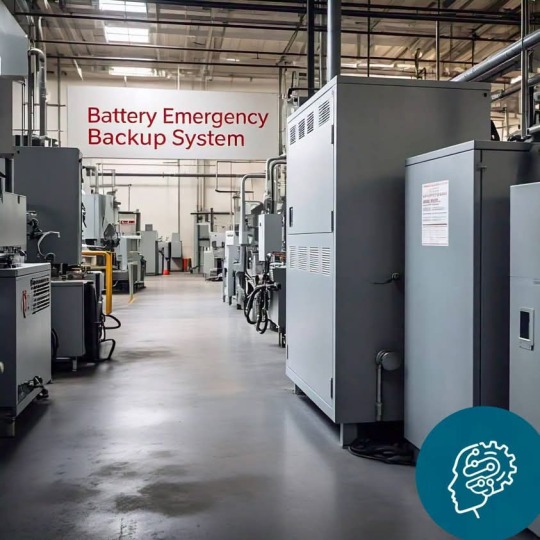

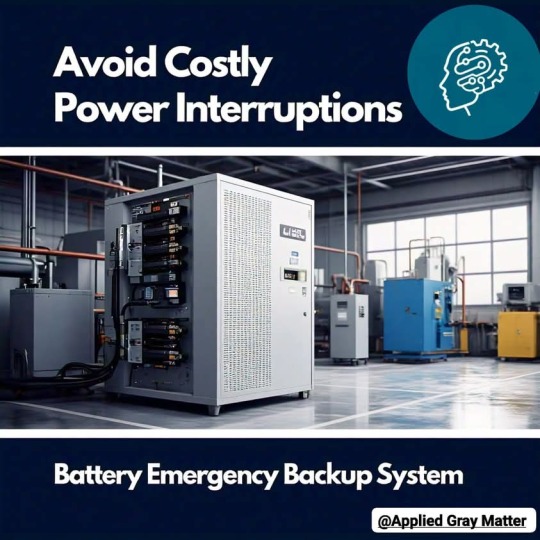

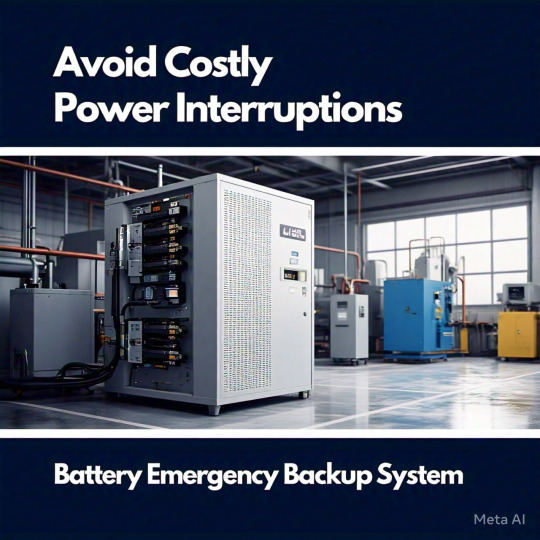
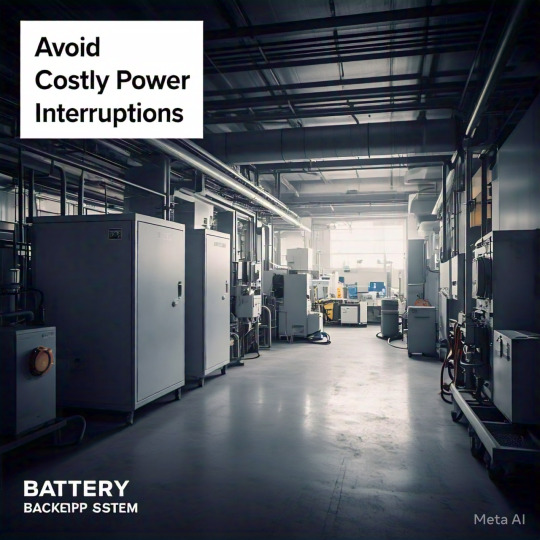



#backupbattery #uninterruptedPower #bebs #continuouspower #criticaloperations #undustrialbattery
#applied gray matter#uninterrupted continuous industrial grade battery backup power#industrial battery backup storage systems solutions#emergency battery storage#battery emergency backup system custom designed and manufactured by applied gray matter#battery Emergency Backup#industrial Grade Uninterrupted Continuous Power generator
0 notes
Text
We are growing our list of clients yearly because we deliver quality and long-lasting office furniture. If you’re looking for the best office furniture online in Gurugram, please visit our website today, www.westernofficesolutions.com or showroom at Plot No. 6, Street No. 6, Main, Pataudi Rd, Kadipur Industrial Area, Gurugram, Haryana 122505 to find quality office furniture and create a space that works for you.
#western office solutions#office furniture dealer in gurgaon#modular office furniture manufacturer#modern office design in gurgaon#interior design#interior design company in gurgaon#office furniture
0 notes